How to make money with Uniswap V3

Dear Bankless Nation,
Uniswap V3 launched on mainnet a month ago.
And it’s already doing more volume than Uniswap V2.
V3 featured some massive improvements to the protocol—such as the introduction of concentrated liquidity for better capital efficiency.
And the capital efficiency isn’t just a little better—Uniswap V3 is like 4,000x more capital efficient. This means that your money is being put to work more efficiently. You can make more money as a liquidity provider in Uniswap V3.
Look who earned a 12% return in 5 days with his GTC drop…
But providing liquidity to V3 isn’t as simple as it was before. From setting your price ranges, to using the proper fee tier, to having an NFT to represent your LP position, it can be overwhelming for new users.
There’s a lot to understand with Uniswap V3.
So we had William break it down for us.
Let’s figure out how to make money in the newest version of Uniswap.
- RSA
How to LP on Uniswap V3
Uniswap—one of the leading decentralized exchanges on Ethereum—released its latest protocol upgrade, Uniswap V3.
At Bankless we explore the frontier, and Uniswap V3 is the tip of the spear when it comes to learning new things in DeFi. In this tactic, we’ll dive into how to navigate this new V3 system and how you can earn money as a Uniswap V3 liquidity provider (LP).
- Goal: LP on Uniswap V3
- Skill: Intermediate
- Effort: Understand Uniswap V3 and supply tokens
- ROI: Trading fees + experience as one of the first LPs for V3
What is Uniswap V3?
Uniswap is a protocol for decentralized and permissionless token swaps on Ethereum. The project first started grabbing attention when it first launched in November 2018 as crypto traders trialed the protocol and its ETH/ERC20 liquidity pools.
The game changed in May 2020 when the Uniswap team launched Uniswap V2, a key component in the now fabled DeFi Summer 2020. The V2 upgrade was highly optimized over V1 and allowed for unprecedented possibilities in DeFi—like ERC-20 to ERC-20 liquidity pools. And traders took notice!
📺 Why Uniswap V3? Watch our ep w/ Hayden Adams founder of Uniswap to learn more
Throughout the rest of 2020 and through the beginning of 2021, Uniswap V2 saw truly impressive levels of activity. The exchange protocol had done over $200B volume to date, so it’s already rivaling volume levels of major centralized crypto exchanges.
Not bad right?

This brings us to Uniswap V3. The core team started designing V3 before V2 was even released, so this upgrade has been in development for some time. V3 launched on Ethereum mainnet earlier this month and it packs a serious punch.
Here’s why:
Why Uniswap V3 is Game Changin
Most tokens trade within given price ranges. Uniswap V2 is a marvel of engineering, yet its users provide liquidity evenly along all of its markets’ price curves, which leads to capital inefficiency. This is where Uniswap V3 is innovative. The new protocol is vastly more efficient with the introduction of concentrated liquidity—the ability for LPs to provide liquidity within specific price ranges.
Let’s say you’re looking to trade the USDC/USDT pair. On V2, we can just spitball and hypothetically assume the vast majority of this pair’s trading occurs within the $0.98 to $1.02 price range. All the capital within the V2 pool outside of this price range is basically just sitting idle.
But with V3, the big advantage for LPs is they can actually choose what price ranges they want to supply liquidity for. In the case of the example above, V3 LPs can directly target the aforementioned price range so they know their liquidity is being put to the most efficient use possible and thus earning the highest amount of trading fees. That’s where the name concentrated liquidity comes from!
Accordingly, the ensuing advantages of V3 include:
- 4,000x optimization in capital efficiency over V2, which allows LPs to earn more for supplying capital while also facilitating more efficient execution prices for traders (better trades than CEXes for example).
- Optimizations for LP flexibility, meaning LPs can create V3-centric portfolios that can be heavily exposed to their assets of choice while also mitigating downside price risks.
- Optimizations for single asset liquidity provisioning (e.g. supply 100% ETH instead of 50% ETH and 50% DAI) along price ranges, in other words above or below the current spot prices.
📝 Quick Note: Uniswap V3 uses NFTs for LP positions!
In Uniswap V1 and V2, you receive fungible ERC-20 tokens representing your liquidity position in the pool. But in V3, LPs receive non-fungible tokens (NFTs) that represent their Uniswap V3 liquidity positions. As explained in the V3 mainnet post:
“The pool interface now supports the creation of Uniswap v3 positions with multiple fee tiers and concentrated liquidity ranges. Each position is represented as an NFT and comes with a unique piece of on-chain generative art. Look out for rare sparkles!”
NFTs make it easy to represent LP positions in given price ranges. This marks a paradigm shift for DeFi which has usually relied on fungible ERC-20 LP tokens to represent LP positions.
With that in mind, don’t go selling your Uniswap V3 NFT on marketplaces like OpenSea or Rarible for less than it’s worth in literal liquidity! We’ve already seen one or two poor souls do this—likely unknowingly. Don’t be like them.
Your NFT is claimable for the assets you deposited in the pool. Do not sell it for less than it’s worth!
More Bankless resources on Uniswap V3:
- 🚨 Alpha Alert: Uniswap V3
- 📺 Uniswap V3 (Layer 2 Rollups on Optimism, Concentrated Liquidity)
- 📺 ROLLUP: Uniswap V3 | BTC in Bank Accounts | Bankless DAO
How to provide liquidity on Uniswap V3
Because Uniswap V3 relies on concentrated liquidity, it’s incumbent on you as a prospective liquidity provider to figure out the price range you want to provide liquidity for and then move forward from there.
If you want to start from scratch, here’s how you do it:
First navigate to Uniswap.Exchange and select your pair of choice through the “Pool” dashboard.
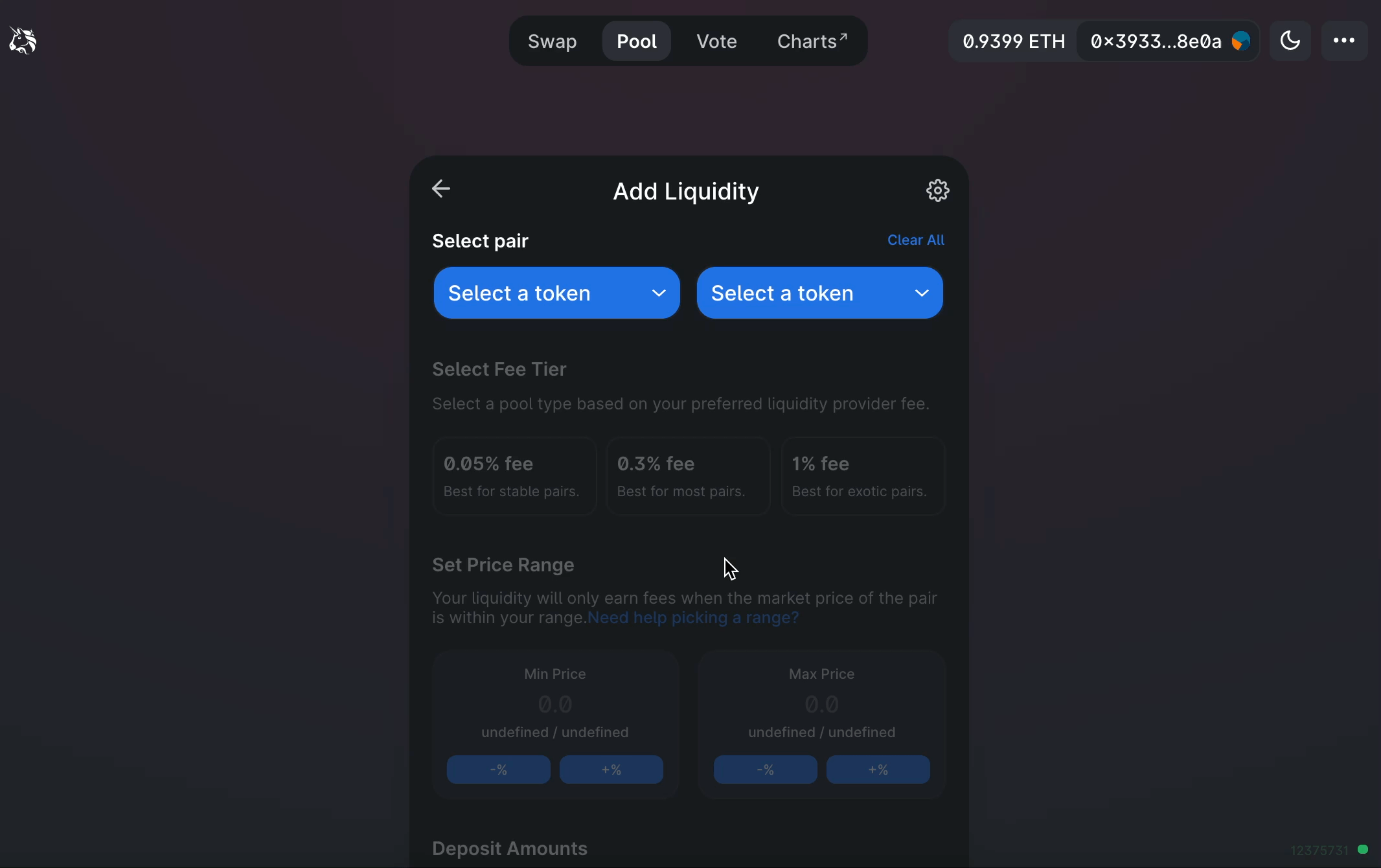
Source: Uniswap User Guide Pick your desired fee tier, e.g. from 0.05% LP fee to 1% LP fee.
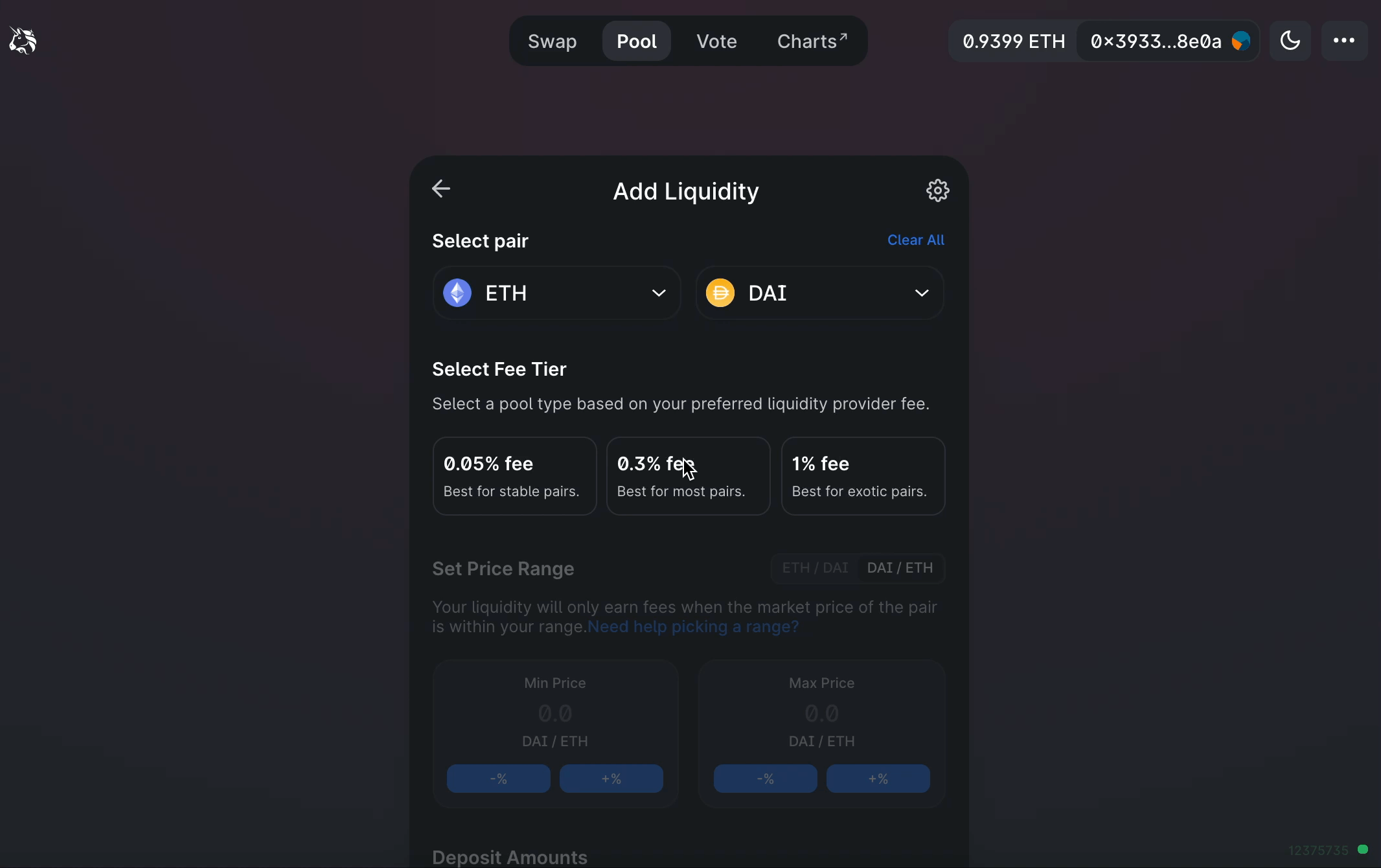
Source: Uniswap User Guide Next you’ll have to pick which price range you’ll want to provide liquidity within.
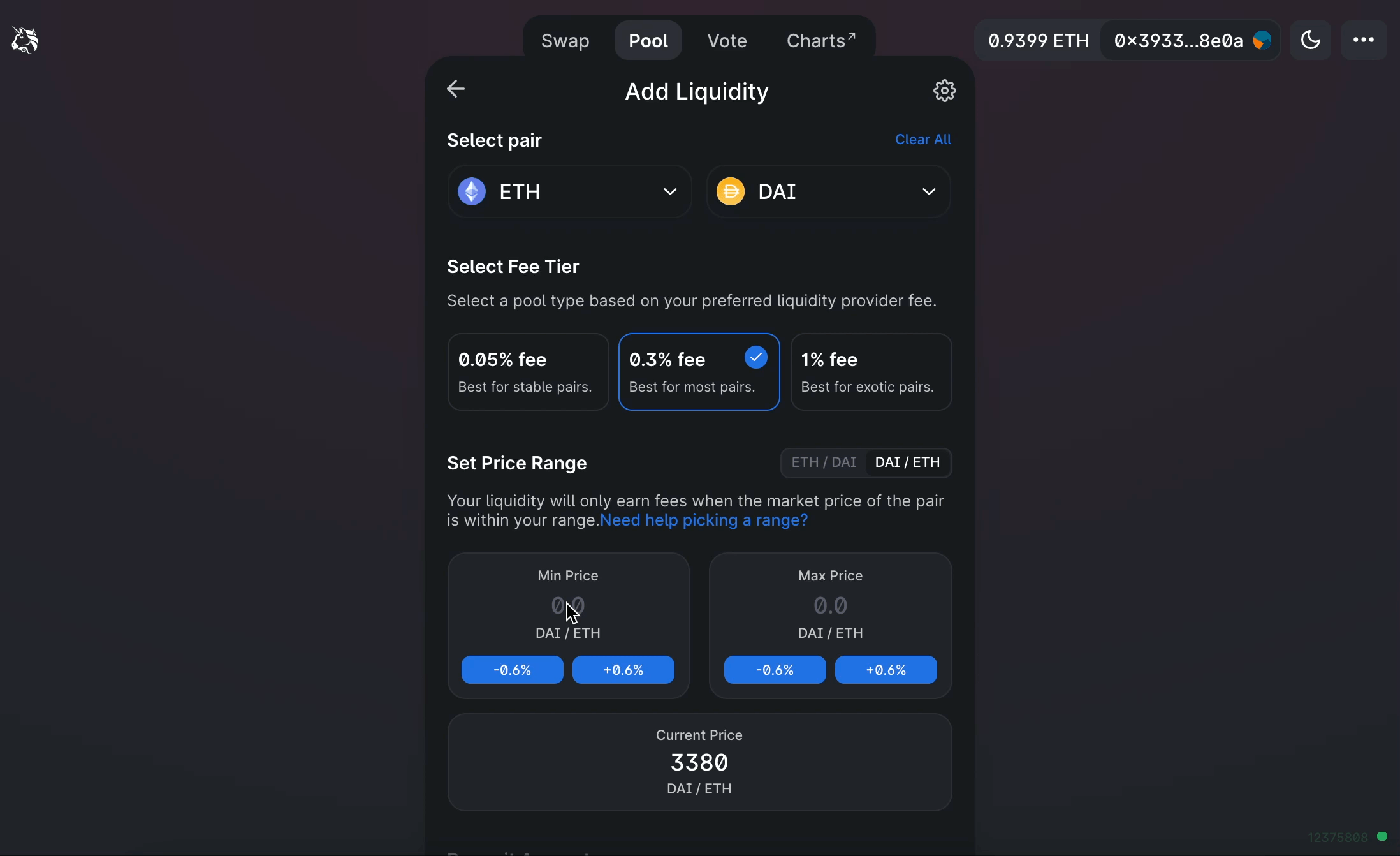
Source: Uniswap User Guide As explained in the Uniswap User Guide:
“Depending on the fee tier selected, the interface will offer the ability to adjust prices in either 0.10%, 0.60%, or 2.00% increments. Manually entered prices will automatically adjust to the closest associated price tick.
If the price moves outside of the LP's specified range, their position will be concentrated in one of the two assets and not earn trading fees until the price returns to their range.
[...] A narrower price range has the advantage of being more capital efficient. As an example, a v3 LP in a stablecoin-stablecoin pool can provide the same liquidity depth in the $0.99 — $1.01 price range as a v2 LP with just 0.5% of the capital.”
Decide how much capital you want to allocate, approve the V3 router contract, then deposit your capital with a transaction. Once that transaction is complete, you’ll be serving as a Uniswap V3 LP.
At this point you’ll receive a Uniswap V3 NFT LP token. Guard it closely! This is how you’ll represent and redeem your underlying liquidity pool position whenever you please.
Migrate Your Uniswap V2 or SushiSwap LP Positions
The Uniswap team has made it easy for Uniswap V2 and SushiSwap LPs to migrate their positions over to Uniswap V3. If you’re interested in migrating, here’s what you need to do:
Go to the Uniswap “Pool” dashboard, which will automatically find your Uniswap V2 or SushiSwap positions. Click on your pool of choice.
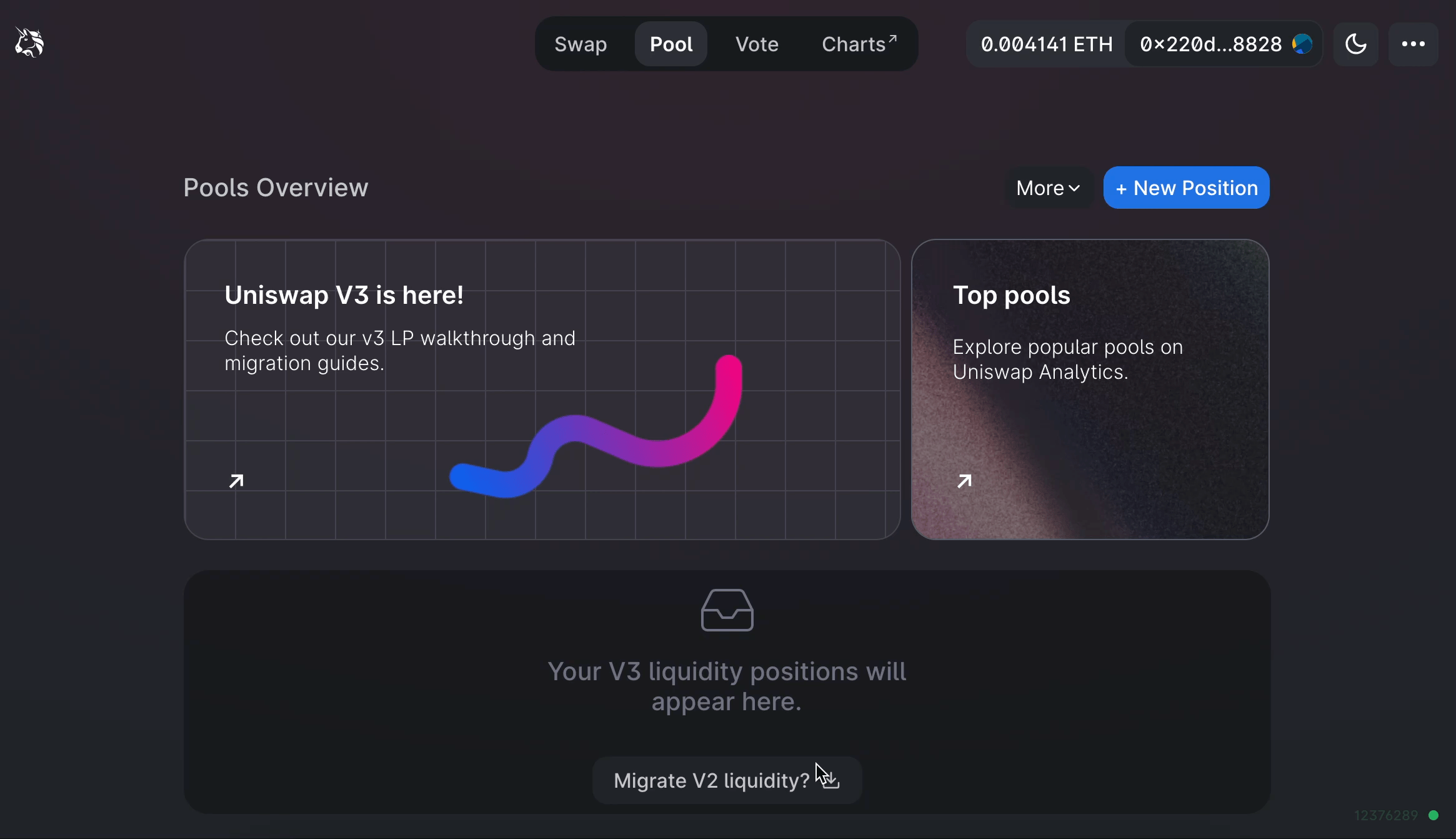
Source: Uniswap User Guide Select your desired fee tier, e.g. from 0.05% to 1%.
Set your price range, and keep in mind that more narrow price ranges are more efficient.
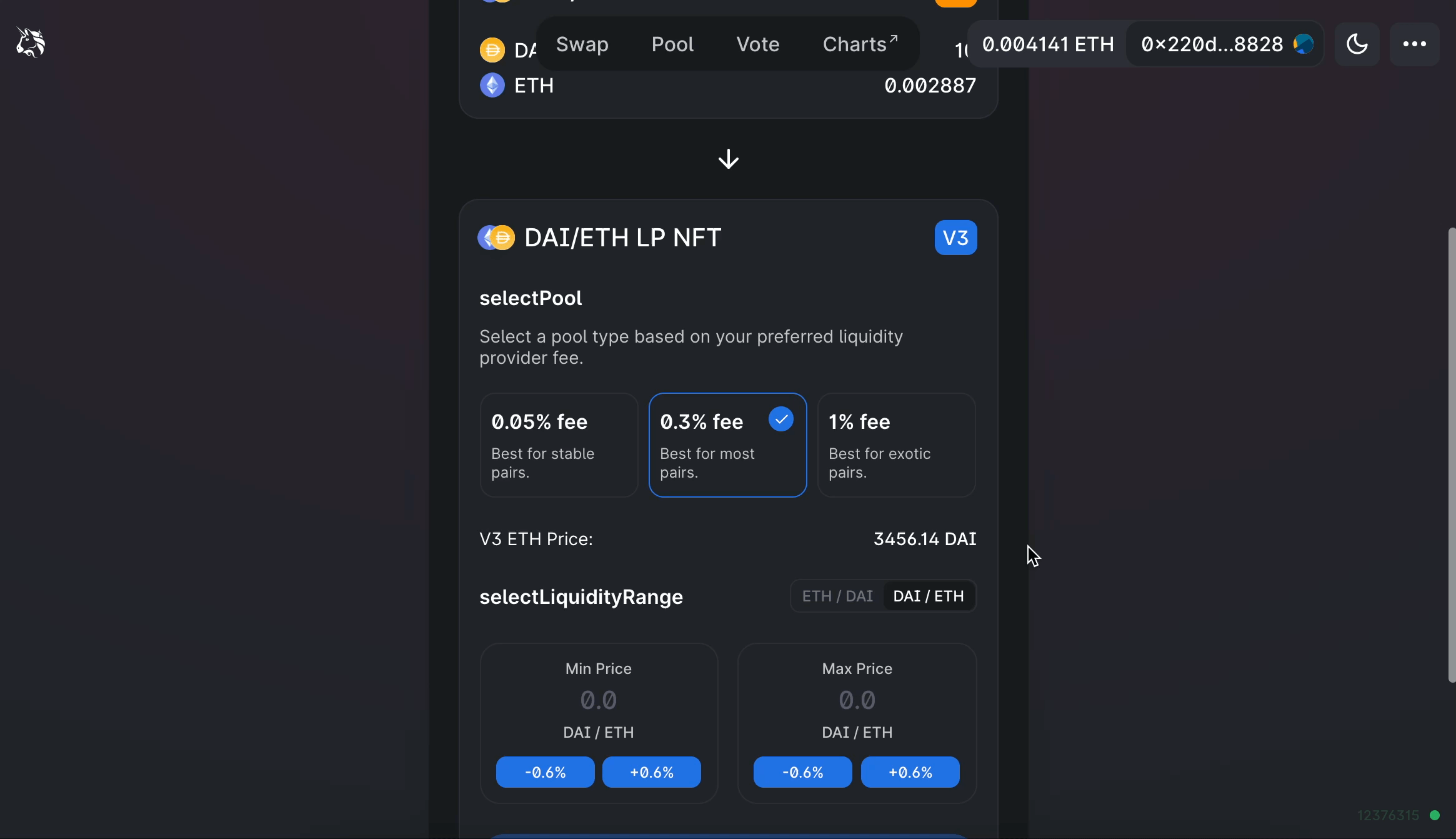
Source: Uniswap User Guide Approve the Uniswap V3 router contract, so that it can put your LP tokens to use. Once the approval transaction is complete, you’ll be ready to migrate your liquidity with a final transaction!
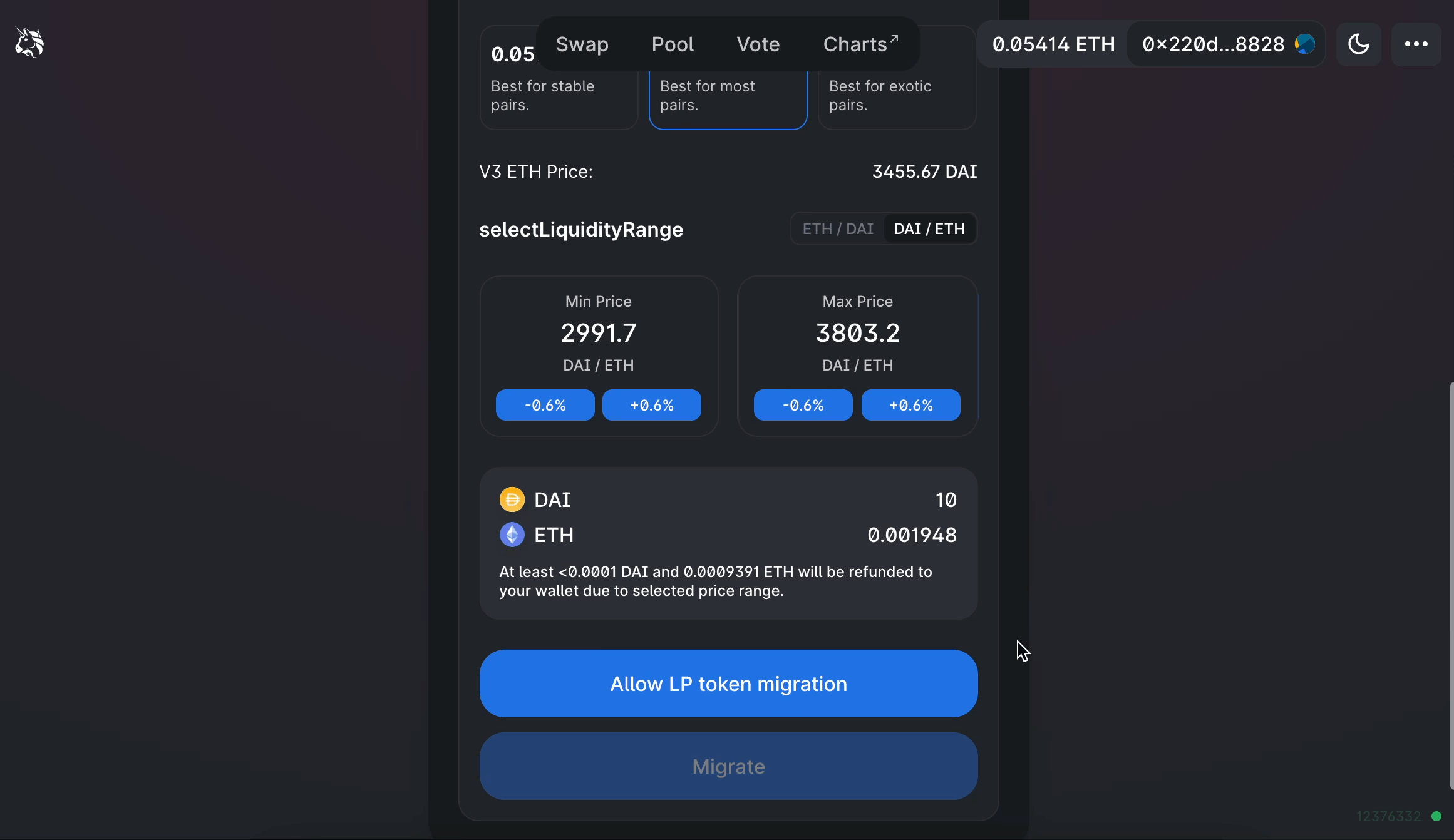
Source: Uniswap V3
Once confirmed, you’re all set. You’re now providing liquidity to Uniswap V3 and making some serious cash from trading fees due to the protocol’s substantial capital efficiency gains.
Conclusion
Uniswap V2 helped kick off the DeFi Summer last year.
Will Uniswap V3 do the same for summer of 2021? Perhaps a deployment on one of the new fancy Layer 2s like Optimism and Arbitrum will ignite the fuel for DeFi Summer: Layer 2 edition…
In the very least, it’s clear that Uniswap V3 represents a hyper efficient automated market maker (AMM) design. There’s a decent chance this superior infrastructure translates into a wild summer of trading activity from here, especially as Layer 2 comes into the fold.
Either way, Uniswap V3 is going to be a big part of the DeFi equation moving forward!
Action steps
Check out the new Uniswap V3 trading dashboard 👀
Level up on Uniswap V3 with these Bankless Resources: